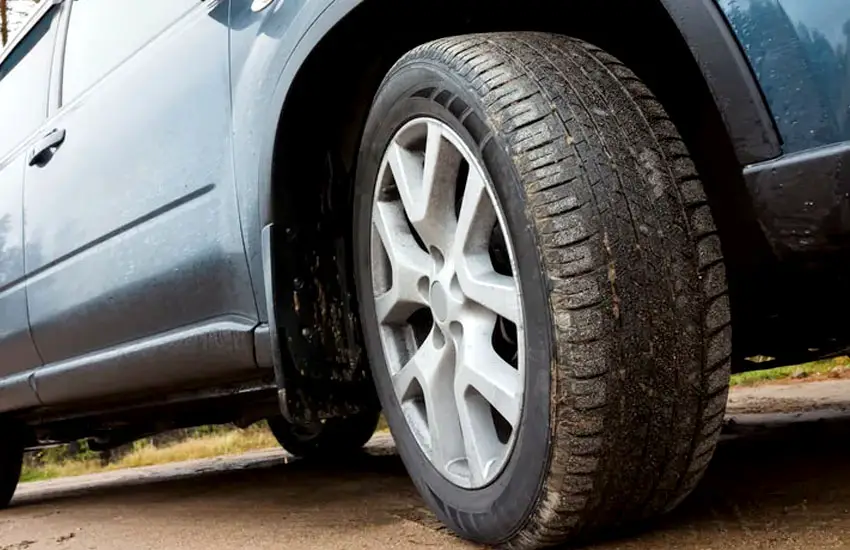As an Amazon Associate, I earn from qualifying purchases at no extra cost to you.
How to Measure Tire Tread with a Quarter: A Simple Guide
When was the last time you checked your tire tread? Most car owners don't think about it until it's too late, and their tires have already worn down to dangerous levels. Worn-out tires are not just a hassle; they can be a serious safety risk on the road. Fortunately, there is an easy, cost-effective way to measure tire tread depth at home—using a quarter!
While there are specialized tools to measure tire tread, using a quarter is a quick and reliable trick to help you gauge whether your tires are in good condition. In this blog post, we'll dive deep into how to measure tire tread with a quarter and why it matters.
Why Tire Tread Depth Matters
Before we get into the details of how to measure tire tread with a quarter, let's first understand why tire tread depth is so important. The tread on your tires is the rubber that makes contact with the road. It is essential for grip, handling, and stopping your vehicle safely, especially in wet, snowy, or icy conditions.
As your tires wear down, the tread becomes less effective at gripping the road, which can lead to dangerous situations, such as hydroplaning or longer stopping distances. That's why regular tire tread checks are vital to ensure your tires are still providing the safety and performance you need.

The Basics of Tire Tread Depth
Tire tread depth is measured in 32nds of an inch. A new tire typically starts with a tread depth of around 10/32" to 12/32", depending on the brand and model. Over time, as you drive, the tread wears down. When the tread depth reaches 2/32" or less, your tires are considered legally bald, and it's time to replace them.
To keep your tires performing at their best, it's crucial to monitor the tread depth periodically. Luckily, you don't need to be a mechanic to check the depth of your tire tread. All you need is a quarter, and we're going to show you exactly how to do it.
How to Measure Tire Tread with a Quarter
Now that we understand why tire tread is important, let's walk through how to measure your tire tread depth with a quarter.
Step 1: Prepare Your Quarter
To measure your tire tread, you'll need a U.S. quarter. Specifically, the quarter's thickness is useful for this method. If you're using a quarter from another country, it might not be as effective, as different coins have different sizes. However, in the U.S., the quarter is the perfect size for the job.
You'll also need to ensure that the tire is cold and the vehicle is on a flat surface to get an accurate reading. It's best to check the tread on each tire, as wear can be uneven.
Step 2: Find the Tread Wear Indicators
Look closely at the tread of your tire. You will find small grooves or raised areas in the tread called “tread wear indicators.” These are designed to help you determine when the tread is too low. They are often found in the bottom of the grooves at intervals around the tire.
The tread wear indicators usually appear when the tread has worn down to 2/32". If you don't see these indicators, that's okay—your quarter will still help you measure the tread depth.
Step 3: Insert the Quarter into the Tread
Take your quarter and hold it with George Washington's head facing down. Insert the quarter into the deepest part of the tire tread, making sure the edge of the quarter is facing the bottom of the tread. Push the quarter into the groove of the tire until you can no longer push it deeper.
Step 4: Evaluate the Depth
Look at how much of George Washington's head is visible. This is where you'll determine if your tread is still safe.
- If the top of George Washington's head is still visible, your tread depth is less than 4/32", which means it's time to consider replacing your tire.
- If the top of his head is partially covered by the tread, then your tread depth is between 4/32" and 5/32", which is still acceptable but could use monitoring as it wears down.
- If the top of George Washington's head is completely covered, your tread depth is 6/32" or more, indicating that your tire still has plenty of life left.
Step 5: Repeat the Process on All Tires
To ensure the safety of your vehicle, it's important to check all four tires. Sometimes, tires wear unevenly, so don't just focus on one tire. Perform the same quarter test on each tire, including the inner, middle, and outer sections of the tread. This way, you can spot any uneven wear patterns that may indicate issues like misalignment or underinflation.
How Often Should You Check Your Tire Tread?
As a general rule of thumb, you should check your tire tread every 5,000 miles or at least once every month. If you live in an area with harsh weather conditions like snow or rain, it's even more critical to monitor the tread frequently. Worn tires perform poorly in wet or icy conditions, which can lead to accidents.
Regular tire checks are important even if you don't drive a lot. Tires can lose tread due to age, not just wear from driving, so it's always good to inspect your tires regularly.
Other Methods to Measure Tire Tread
Although using a quarter is a reliable and simple method, there are other ways to measure tire tread depth. Some people may opt for a specialized tread depth gauge, which can provide a more precise measurement. A typical tread depth gauge costs between $5 and $15 and can be found at most automotive stores. Another option is to check the tire wear indicators, which are built into many tires. If these wear indicators are level with the tread, it's time to replace the tire.
If you're unsure about using the quarter method or if you notice unusual wear patterns, it's always a good idea to have a professional mechanic inspect your tires. They can provide you with an accurate measurement and let you know if your tires need to be replaced.
Understanding Tire Tread Wear Patterns
Besides just measuring the depth, it's also important to understand the wear patterns on your tires. These patterns can give you clues about other issues with your vehicle, such as alignment or suspension problems. Here are some common wear patterns to look out for:
1. Uneven Wear
If you notice that one side of your tire is more worn down than the other, it could indicate a misalignment or improper inflation. In this case, it's best to get your vehicle aligned by a professional mechanic.
2. Cupping or Scalloping
Cupping is when the tread develops a wavy pattern. This could be due to a suspension problem, worn-out shocks, or underinflation. Cupped tires can be noisy, and they may cause a rough ride.
3. Center Wear
If the tread in the middle of your tire is more worn than the edges, it may be a sign that your tire is overinflated. Overinflation reduces the contact area between the tire and the road, causing uneven wear.
4. Edge Wear
If the tread along the edges of your tire is worn down more than the center, it could be a sign of underinflation. Underinflated tires can lead to poor gas mileage and reduced tire lifespan.
Can Tire Tread Be Repaired?
Unfortunately, tire tread can't be repaired once it's worn down. However, you can prolong the life of your tires by maintaining proper tire pressure, rotating your tires regularly, and avoiding rough driving conditions. If you notice that your tires are showing signs of uneven wear, it's important to get your vehicle checked by a mechanic to prevent further damage.
I hope this guide has given you the knowledge and confidence to measure your tire tread with a quarter. It's a quick and easy way to ensure that your tires are safe and in good condition. Regular tire checks are essential for maintaining the safety of your vehicle, so be sure to keep an eye on your tire tread, especially as your tires start to wear down.
Are These Questions in Your Mind?
Is it safe to use a quarter to measure tire tread depth?
Yes, it's a simple and reliable method to get a rough idea of how much tread you have left on your tires. However, it's always a good idea to confirm with a professional if you're unsure.
Can I check my tire tread without a quarter?
Yes, you can use a specialized tread depth gauge or rely on the tire's built-in tread wear indicators to check the depth.
Do I need to measure tire tread on all four tires?
Yes, it's important to check all four tires, as they can wear unevenly, and you want to ensure that all of them are in good condition.
Is it better to use a tread depth gauge than a quarter?
A tread depth gauge can give you a more precise measurement, but the quarter method is a quick and convenient way to get an estimate.
Can tire tread be repaired?
No, tire tread cannot be repaired. Once the tread is worn down, it's time to replace the tire.
Is it necessary to check tire tread frequently?
Yes, you should check your tire tread at least once a month and every 5,000 miles to ensure your tires are in good condition.
Do I need to check tire tread when my tires are new?
While new tires have deep tread, it's still important to check them periodically to ensure they wear evenly and maintain proper inflation.
Can uneven tire wear affect my car’s performance?
Yes, uneven tire wear can affect your car’s handling, fuel efficiency, and safety. It can also be a sign of underlying issues such as alignment or suspension problems that need to be addressed.
Do I need to replace all four tires at once?
Ideally, you should replace all four tires at once to ensure balanced handling and performance. However, if only one or two tires are worn out, you can replace them, but make sure the new tires match the remaining ones in size and type.
Is it worth investing in high-quality tires?
Yes, investing in high-quality tires can improve your vehicle’s performance, safety, and fuel efficiency. High-quality tires tend to have better tread life, traction, and handling characteristics.
Do I need to rotate my tires?
Yes, regular tire rotation helps ensure even tire wear and extends the lifespan of your tires. It's generally recommended to rotate your tires every 5,000 to 8,000 miles.











